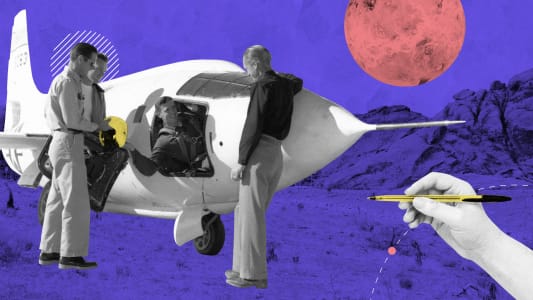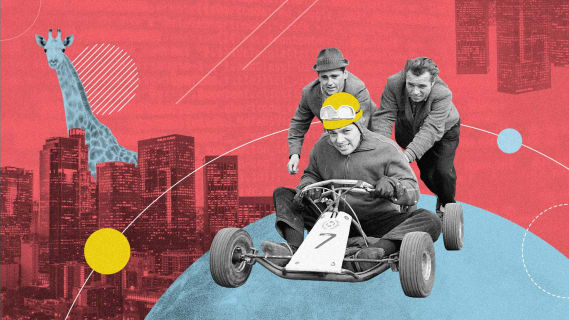Solving team conflicts: how “clear the air” workshops make a difference
There is a human factor in product development. Your team could have the right skills and experience to work well together, but there is always a possibility that they won’t align on a personal level. What do you do when frictions and tensions accumulate to the point where it starts affecting your team’s performance? In this article, we will tell you about a tool that was created just for that reason - clear the air workshops. Read on to learn what they are, how they are conducted, and how releasing tensions in the team is not the only benefit.

Table of contents
What are “clear the air” workshops?
Clear the air (or CTA for short) describes a workshop designed to tackle a product team’s (or any other team to be honest) internal conflicts that cannot be addressed during regular retrospective meetings.
The goal of this workshop is to truly hear each other.
A CTA is an opportunity for teams to talk about specific situations or tensions related to other teammates’ performance, attitude, or even leadership. It’s important to remember that there is no pressure to solve every problem right away but to focus on communicating effectively. Releasing tensions and clearing the air within the team is just a by-product.
What makes these workshops worth the time?
The meeting helps the conflicted team members understand each other better and communicate more effectively on a daily basis. As a result, the team’s collaboration improves noticeably. Even if not every problem can be resolved right away, the simple act of expressing one’s concerns and complaints and being truly heard releases the frustrations and animosities that were standing in the way of collaboration. Tensions that require more time and attention will receive an actionable plan that everyone involved will understand.
The other major benefit of a CTA workshop is building a foundation for effective communication - team members gain tools for resolving conflicts as they arise. Other than that it is a space for personal development, so your team can learn how to:
- better empathize with each other,
- build and maintain a culture of psychological safety,
- channel their frustration in a constructive way,
- get to the core of conflicts before looking for solutions.
Last but not least: Clear the air workshops can save time and money that otherwise must be spent on solving serious conflicts that were not solved at the very beginning. In addition, such workshops can improve a team’s performance if the issue was related to how particular team members were collaborating.
How we conduct clear the air workshops at Boldare
At Boldare, we have a procedure for making the most of a CTA workshop. While the idea itself is quite well known, we improved the formula thanks to our Scrum masters community and facilitator role that we took from the holacracy management system. We defined our own structure and a code of conduct for everyone to follow.
Workshops are organized into four parts: an introduction with check-in, a round of submitting tensions, a round of addressing tensions, and a check-out.
First, there is an introduction, where the Scrum master acting as facilitator explains the purpose and the rules of these workshops. As a check-in, each team member is asked one question: what are you expecting to accomplish today? The team then sits down in a circle, and everyone gets a pen and post-it notes to write down their tensions, using a simple pattern:
Their name
The intensity of their tension (on a scale from 1 to 10)
The number of people that this tension is addressed to.
The tensions are then laid down on the floor in the circle shape so that every owner could see its own tensions. The facilitator can choose to start with a single, low-intensity one as a warm-up exercise.
After that, they focus on the tensions with the highest intensity first. This way of prioritizing ensures that problems that affect the team the most will be addressed within the allocated timebox. Also, our experience has shown that resolving higher-intensity tensions often results in the resolution of corresponding low-intensity ones. If that’s the case, the resolved tensions are removed from the circle.
Discussing a tension
Each tension should have an “I” pronoun in it. So instead of You make me angry it’s better to say I feel angry at…. Tensions should be constructed using a combination of four areas:
- Observations: something that team members have noticed, witnessed, or heard about, e.g. I saw, I heard, I remember that…
- Feelings: an emotion or a feeling, rather than thoughts, e.g. This turn of events makes me feel sad/mad/angry/frustrated.
- Needs: what the team member needs, or what they value. Something that evokes emotions, e.g. It’s because I need…
- Requests: something that can help improve the cooperation in the team and how we feel with each other. It should be formed as a request, not a demand, e.g: I would like you to…
The facilitator will require that each observation is no longer than five sentences. Following this pattern, a simple low-intensity tension could look like this:
On a post-it (submission round):
Mike / Intensity level 3 / 1 person.
In a round of addressing the tension:
Sarah, I noticed that you forget to make updates on your tasks on a regular basis - it makes me frustrated because I need to ask you directly whether you have finished something or not. I would like you to start using Asana/Jira to update your tasks.
It is very common that people will feel relieved just by saying their tensions out loud. Now there is time for a response. The receiver of the tension should now say out loud what they heard. In our example, this would be Sarah saying: I hear that you don’t know when I complete any of my tasks and that you need me to let you know as soon as I do. This part is called a reflection. The facilitator then helps Mike and Sarah to come up with a solution, but also makes sure that every voice will be heard.
If the tension had more than one receiver, each one of them should say what they heard and ask questions if needed. Then they should say if they accept the request or not. In our example, Sarah could say: I accept your request. She doesn’t need to come up with the solution right away. It is up to Mike (the tension’s owner) to come up with what he needs to solve his tension (possibly with the help of a facilitator Mike can come to that). Sarah can possibly suggest another one if Mike’s proposal is somehow invalid.
Good practices that make these workshops effective
In our experience, the best results of CTA workshops happen when they are conducted in person. Doing them online is possible, but the participants sitting in front of a computer screen might feel tempted to do some work in between their tensions. This prevents them from being fully engaged and empathetic towards their colleagues and stands in the way of truly hearing them.
Breaks are important. These workshops can be intense, so the facilitator and the team will need to clear their heads in between tensions. To do so effectively our Scrum masters recommend a strict rule of not talking about the workshop during a break. It’s best to keep workshop breaks as a separate space for rest and socializing.
Should you invite your team to a clear the air workshop?
You don’t need an “elephant in the room” type of problem to benefit from a CTA workshop. They could be organized on a regular basis every 4-6 weeks and can serve as a precautionary measure to equip your team with tools to better communicate.
Talking about one’s feelings, especially difficult ones, can be uncomfortable at first, but the potential for personal growth can serve as an incentive for stepping out of your comfort zone.
Share this article:









